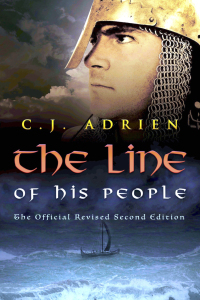Why did the Viking Age End?
The internet is abound with a multitude of theories on why the Viking Age began. But why it ended is equally as interesting because it was a pivotal segue into the medieval period so romanticized by 19th Century historians. Scandinavian raiders ruled the seas and rivers of Europe for hundreds of years, yet their maritime hegemony did eventually end, although their seafaring technology would not be bested for another long while. Why did the Viking Age end? What led to the demise of their notorious raids? The following are brief summaries of several of the most important issues to answer this question. Keep in mind, however, that the end of the Viking Age was the result of a vastly complex interweave of issues and events.
The Christianization of Scandinavia
Over the course of their three-hundred-year-long reign of terror, a less pronounced force gradually chipped away at the Vikings’ roots. Charlemagne’s Christian empire sought to convert the world to their faith through force of arms, but he stopped short of Denmark and died before launching any significant invasions of it. Spared the constraints of a Frankish occupation, Danish rulers launched some of the most memorable raids of their day. However, they were not a unified people. Frequent civil wars plagued Jutland (the main Danish kingdom of the time) in the early 9th Century and some of the claimants to the throne sought support from their neighbors to help them ascend to power. Harald-Klak, one such claimant from the early 9th Century, allied himself with the Carolingian emperor Louis and even received baptism to show his dedication to the conversion. The Franks in turn sent weapons and supplies to the Danes loyal to Harald. These early conversions for political reasons were not initially considered a serious commitment, but they began a trend wherein they allowed the Christians to begin incursions into Scandinavia.
Later conversions were more aggressive. Missionaries in the 10th Century continued to convert Danes, Norwegians, and Swedes en masse. Certain rulers, such as Harald Bluetooth, made Christianity their official religion and instituted laws requiring their subjects to convert. By 1066, the date used by historians to demarcate the end of the Viking Age, a majority of Scandinavia was Christian.
The Peace and Truce of God
In the 11th Century, the Roman Catholic Church felt that the incessant, bloody wars between the various European kingdoms were a bane on their efforts to spread the true faith. Violence was a real existential problem for them at the time. To abate some of this violence, they instituted two edicts, dubbed The Peace of God and The Truce of God. These edicts banned violence between Christians under threat of excommunication. Both reforms helped to end the Viking Age by formally dissuading an increasingly christianized Scandinavian population from launching raids on fellow Christians. This did not entirely stop the flow of raiding parties, but they gradually diminished as time passed.
The Feudal System
As the feudal system took hold and spread across Europe, the societal structure which had allowed free men to sail to new lands to raid vanished. What were once considered free men became the indentured servants of the new feudal monarchs who depended on their labor to generate income. Where all men were once required to learn how to fight, they were now dissuaded from doing so. As part of a vast move to consolidate power, the monarchs of Scandinavia instituted reforms to convert their subjects into servants, much as their southern European neighbors had done. Putting together a crew to raid a faraway land became less and less feasible.
The Assimilation of Settlers Into New Societies
The Viking Age saw its twilight when the lands they had once raided were settled and defended by their own kin. This occurred in Britain, Ireland, Russia, France, among several others. Normandy is a prime example of how the Vikings assimilated into the culture of the people who had previously owned the land they settled. By 1066, the Normans were francophone (old French) and loyal to the French king. They obeyed the commands of the Pope and answered to the local church. They retained some vestiges of their Viking past and, arguably, those cultural traits later contributed to the political climate in England that led to the Magna Carta. But for all intents and purposes, the men who invaded Britain in 1066 were no longer Danes, they were French.
A Final Blow
One Scandinavian monarch defied the tide of history and continued to raid as his forefathers had done. This last raider, king Harald Hardrada, built a reputation for himself as a formidable warrior and tactician. In 1066 he attacked England as one of the many rival claimants to the English throne. He was killed at the battle of Stamford Bridge by the forces of Harold Godwinson. Thus ended the life of the last infamous Norse raider; thus ended the Viking Age.
Interested in the Vikings? Check out my novels about the Vikings in France:






